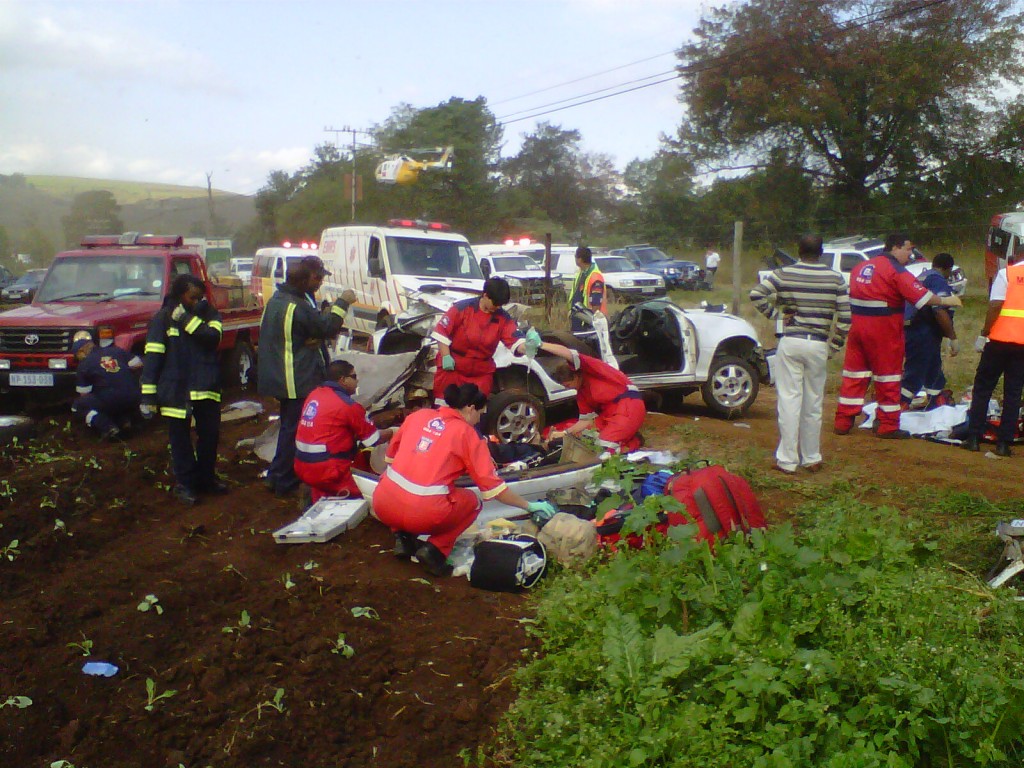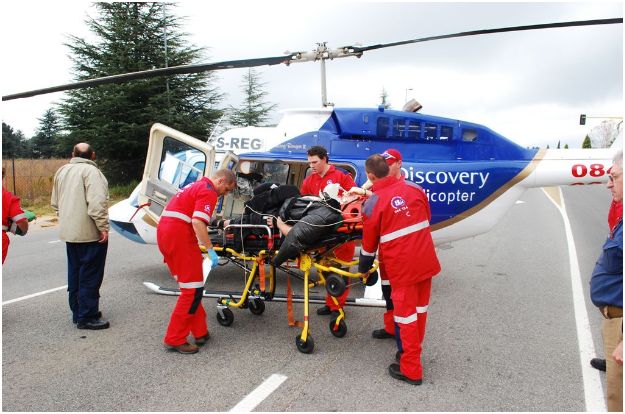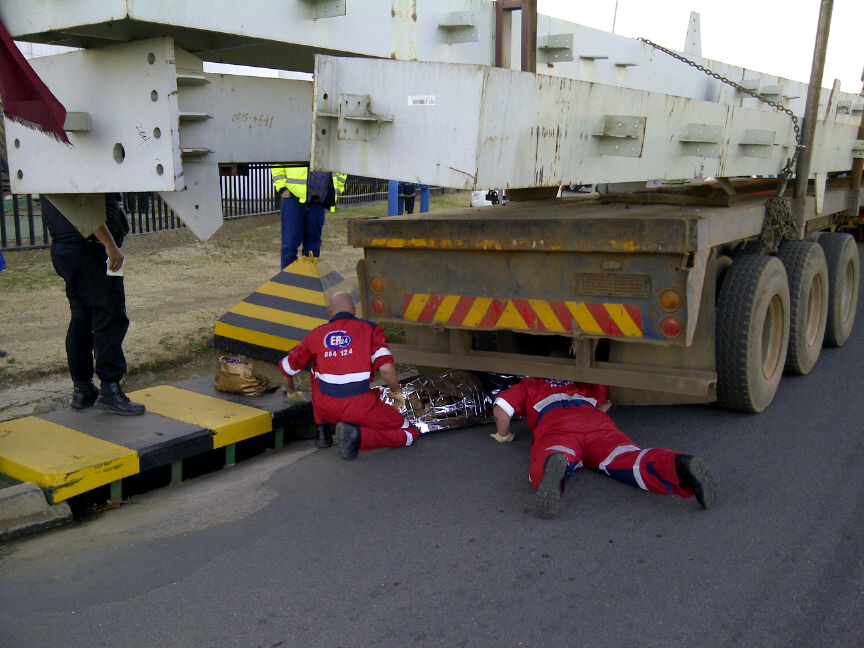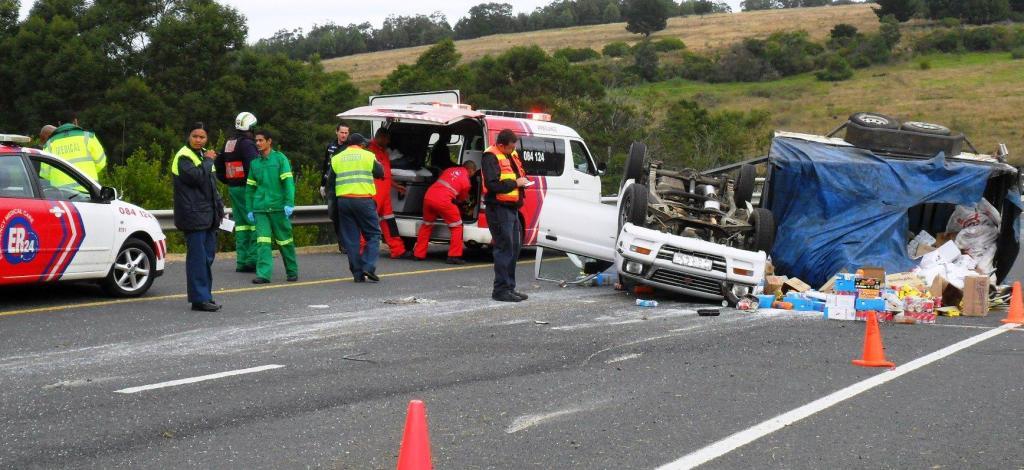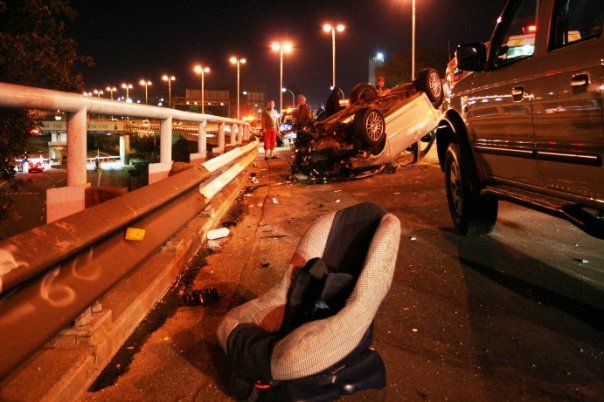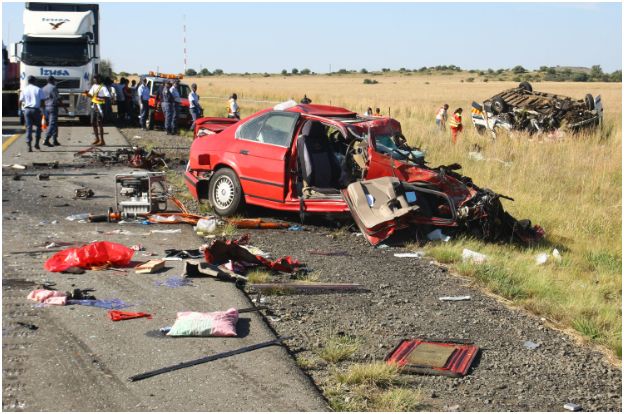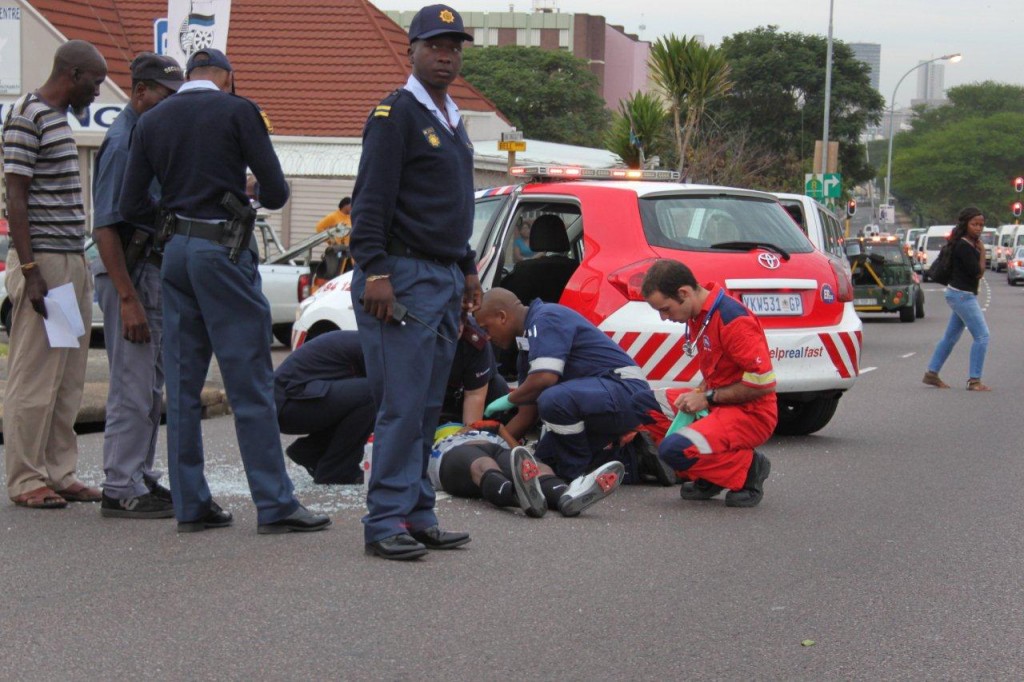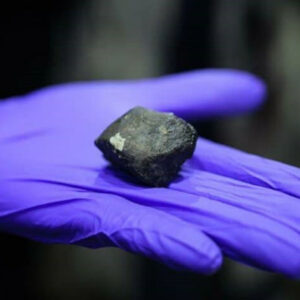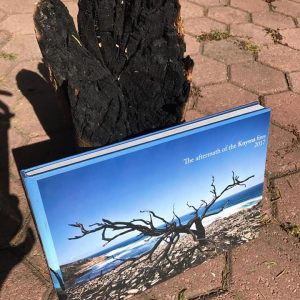To use or not to use horror photos is a much debated topic amongst road safety practitioners. In the development of the Arrive Alive road safety portal many online visitors have also shared their thoughts on this topic.
Today is World Day of Remembrance for Road Traffic Victims and the right time to discuss the use of photos in road safety campaigns.
I would like to briefly discuss this topic from a few different angles and concerns. In doing so I would also like to share, with recognition to the Arrive Alive website a few recent accident photos.
What is a horror photo?
I believe this is more than just a smashed vehicle on the road or at road side. We have gotten used to seeing smashed vehicles at road side and it is rather common to see these photos in our newspapers and on television.
A horror photo in my mind would be that of an accident scene where we see the actual victim of the road crash, or body parts on the road. This could also be where you see the blood on the road or blood on the exterior or interior of the vehicle.
There might even be some kind of “recognisability” of the victims of the crash or a very clear indication that someone might have been severely injured.
How do we lessen the impact of a horror accident photo?
Editors and paramedics taking photos at the scene will most often refrain from sharing everything with the audience. They will decide to rather not show identifiable victims or body parts. They may decide to take a photo from a distance of the victim under a blanket.
They may also decide to “blur” registration plates of the vehicles in the crash.
How do the public react to horrific Accident Scenes?
This was also discussed on the Car Insurance Blog in a post titled “Why are we so obsessed with accident pictures and accidents in general?”. I would like to quote from this post:
“There has been much debate as to whether road safety campaigns should use brutal accident pics in the advertising campaigns. I am one of those who believe that there are so many personalities on our roads – and we need to use a combination of a variety of advertising campaigns to reach as many as possible. This might include a soft, emotive approach as well as from time to time a bit of shock tactics!
It is important that we curb our fascination when driving near an accident scene. Our driving could provide a threat to the safety of accident victims, emergency personnel as well as other road users. Always remember that those accident victims are the loved ones of concerned family members. We need to respect this and not view injured or dead bodies as roadside attractions to be shared with friends via mms or email!
The Arrive Alive website often receives photos of decapitated bodies on the road – and would rather like to focus with the Arrive Alive Website and the Car Insurance Blog on those aspects that could assist our road users to Arrive Alive and to protect them and their vehicles from physical and financial damage.
We will add many photos to the website and would like to do so not to shock or seek sensation – but rather to illustrate the importance of road safety and the risks of dangerous behaviour on the roads!”
Legal and Ethical Concerns
It is important to recognize that there are also legal and ethical aspects to consider when using photos of horror crashes. A visitor [Kim Williams] to the ArriveAlive.co.za page on Facebook recently highlighted some of these concerns. I would like to quote from some of the comments made by her:
“…just asking are you people aware of the patients’ rights charter on HPCSA – i noticed that your pictures seem to come from medics and paramedics – this is a violation of patients right to privacy and confidentiality – overseas medic/paramedics/fire fighters have been dismissed and even served jail time for posting pictures and information relating to accident scenes and patient care – currently in SA a private ambulance company is facing a multimillion rand case against them and the medics involved for doing this very thing! ‘
…I am very much aware of the law, patients’ rights charter, road traffic act and fire brigade act, Health Act, the constitution, Bill of rights, child protection act, Medicines Act etc (the list is very long) the medical professionals protocols ….patients’ rights are patients’ rights period…”
Value of Human Life and the need to Embrace Life
Some Road Safety specialists believe it is more important to share the importance of the value of human life rather than focus on the devastating consequences of road crashes.
I believe it is appropriate to share one of the best road safety advertisements ever made for television in the UK, called Embrace Life:


